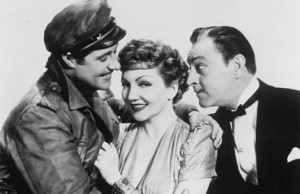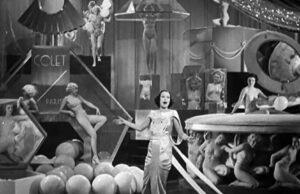Summer Series 1986 – Hollywood Star Director – The Films of Mitchell Leisen

The incomparable Ernst Lubitsch–“the one and only,” as Billy Wilder called him this spring in receiving the AFI’s Life Achievement Award–became head of production at Paramount in 1935. He remained there until his early death in 1947, nurturing the talents of a group of younger comic stylists, the eventual inheritors of his great and enduring legacy: Wilder himself, Preston Sturges, and, though the bequest is less clear and less critically acknowledged, the subject of TFS’s Summer of ’86, Mitchell Leisen.
Leisen seems far removed from the devastating cynicism of Wilder or the polished witticisms of Sturges. More than they, he was studio director, and much less an artist with an individual vision. Tied to the studio, his career waned with the passing of the studio system. As Andrew Sarris has written, surveying that career: “When Mitchell Leisen began at Paramount, the art was supplied by Lubitsch and Sternberg, and the junk by almost everybody else. Leisen occupied a middle position i the late thirties and early forties. . . . The promotion of Preston Sturges and Billy Wilder from writers’ cubicles to directors’ chairs in the forties probably contributed to Leisen’s decline. He soon found himself in the unenviable position of an expert diamond cutter working with lumpy coal.”
Leisen’s career in Hollywood had begun when he was barely of age. Trained as an architect, he entered the film industry as an actor, in one film only, and was soon working for Cecil B. DeMille as costume designer, one of his first projects being the famous Babylonian sequence in Male and Female (1919). He graduated to set design as early as The Ten Commandments (1923), and continued as DeMille’s art director into the early sound period. Leaving his first mentor just before the opulent Cleopatra (where he might have exercised a restraining taste?), he moved to direction; but his eye continued to be on set and costume; the films of his heyday are the epitome of art-deco cinema. His masterpieces, especially his exercises in 1930s comedy, are marked by an almost Lubitschian style and grace, and, when it is there at all, by a more gentle satirical touch than his master’s.
No less than George Cukor, Leisen has been typed as a woman’s director. The reality is more complex. His women are invariably more realized and sympathetically presented than his men, who tend to become mere presences of Milland-MacMurray-Lund blandness. His women are rebels against the patriarchal order, like most of the screwball heroines, but unlike most such heroines, they at alst bend obediently to that order; and Lady in the Dark is in this respect, as in many others, his quintessential picture. His view of women was obviously complicated by his own personal sexual ambivalence: he identified with both the heroine and the patriarchy. Claudette Colbert in Midnight is a much more accommodating young woman than Claudette Colbert in Frank Capra’s It Happened One Night; and MacMurray and Milland emerge as much more defective and threatening representatives of the male in Wilder’s two mid-forties films, Double Indemnity and The Lost Weekend, than they ever were for Leisen.
Reviewing the National Film Theatre’s Leisen retrospective of September 1979 (itself part of a larger series including Lubitsch, Wilder, and Sturges), Sight and Sound for March 1980 summed up Leisen’s career with characteristic British meiosis: “Functioning, as he did, in the interstices of other, more creative directors’ work, neither hack nor authentic artists, but exactly halfway between the two, Leisen’s by no means negligible talents proved ideally suited to the demands that the industry . . . was to make on them.” Leisen remains a house director, but this very fact, and his subordination in importance to his stars, constitute for us now his principal interest. He has the aspect of a smaller moon reflecting the best of the studio system at the height of its power and its glory. And, in those years, theirs and so his was the kingdom.

Sunday Afternoons at the Paradise
Join TFS for Season 78’s Sunday Matinée Series generously sponsored by our good friend, author and documentary filmmaker, Mr. Don Hutchison. Please save these dates and visit us regularly...







